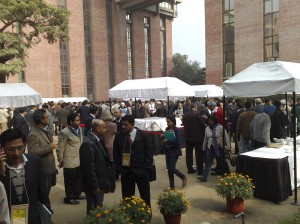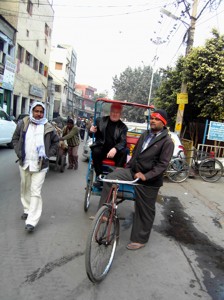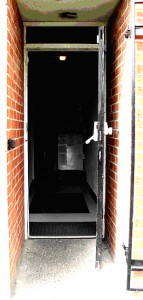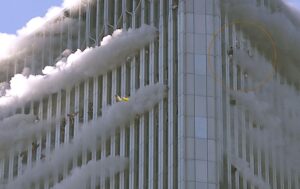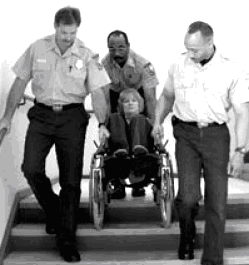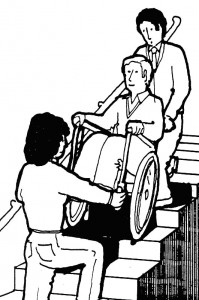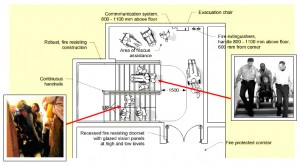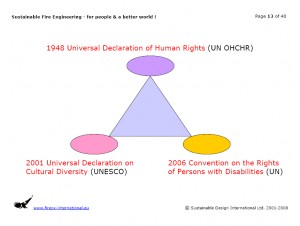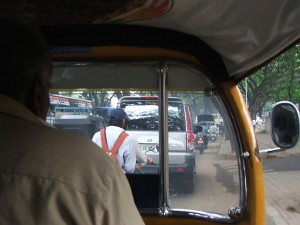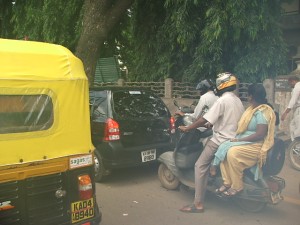[It was necessary to commence this post … only after visiting India. See the first post of 2010-01-18.]
Well … we really saw it all at Copenhagen during those two long weeks in December 2009. Wasn’t it great to watch ?!? News, gossip, political ’shenanigans’ and spin … along with riots in the streets and walk-outs in the corridors … a veritable circus … an unmitigated farce !!! A crime against humanity ????
Following the UNFCCC Summit … the PEW Center on Global Climate Change, in the USA (using their own words: an independent, non-profit, non-partisan organization dedicated to providing credible information, straight answers, and innovative solutions to address climate change), offered this ‘credible information’ …
‘ A new political accord struck by world leaders at the U.N. Climate Change Conference in Copenhagen provides for explicit emission pledges by all the major economies – including, for the first time, China and other major developing countries – but charts no clear path toward a treaty with binding commitments.
The basic terms of the Copenhagen Accord were brokered directly by President Obama and a handful of key developing country leaders on the final day of the conference, capping two weeks of harsh rhetoric and pitched procedural battles that made the prospect of any agreement highly uncertain. It then took nearly another full day of tense negotiations to arrive at a procedural compromise allowing the leaders’ deal to be formalized over the bitter objections of a few governments.
… ‘
Now compare this News Article, by Satyen Mohapatra, from the Hindustan Times, New Delhi, India … dated Saturday, 9th January 2010 …
India Brought China Onboard at Copenhagen
New Delhi: Environment & Foreign Minister Jairam Ramesh, on Friday, said India had brought China onboard at Copenhagen.
“India brought China onboard at Copenhagen. The U.S. actually owes a lot to India”, he said here at an interaction.
Despite taking a leadership role during the negotiations, Ramesh said, the Chinese were not ready to talk directly with the US, but always as part of the BASIC (Brazil, South Africa, India and China) Group.
Recounting how the Accord was reached at Copenhagen, Ramesh said it was “floundering on three issues: whether the goal of arresting greenhouse gas (GHG) emissions by 2050 should be expressed in terms of temperature or emission reduction or concentration of GHG in the atmosphere; what would be the international monitoring and verification regime for the mitigation actions of the BASIC countries; and whether the Accord would be legally binding”.
“We got 2.5 out of three”, he added.
And then … consider the opening of a statement by Bruno Rodriguez Parrilla, Cuban Minister for Foreign Affairs, at the last session of the Climate Summit on Friday, 18th December 2009 …
Mr. Chairman:
It has been four hours since President Obama announced an agreement that does not exist. He is disrespecting the international community and behaving as an imperial master.
The document that you, Mr. Chairman, repeatedly claimed that did not exist is showing up now. We have all seen drafts surreptitiously circulated and discussed in secret meetings, outside the rooms where the international community has been transparently negotiating through its representatives.
As it happens, Mr. Chairman, the non-existent document does exist. I deeply regret the way you have conducted the works of this conference.
I can anticipate that the delegation from the Republic of Cuba has decided not to accept the declaration you are introducing. I do not need any additional consultation in any other framework or format; therefore, I declare that at this conference there is no consensus on this document.
I add my voice to that of the representatives of Tuvalu, Venezuela and Bolivia. Cuba considers the text of this apocryphal draft extremely insufficient and inadmissible. The unacceptable goal of 2 degrees Centigrade would have incalculable catastrophic consequences, particularly for the small island nations. It would also have a grave impact on numerous species of the biodiversity.
The document that you are unfortunately introducing contains no commitment whatsoever on the reduction of greenhouse gas emissions.
I am aware of the previous drafts, which again through questionable and clandestine procedures, were negotiated in small groups and which at least made reference to a 50% reduction by 2050. I have here with me those previous drafts that it would be worthwhile making public in this room and releasing to the media and the representatives of the civil society.
The document that you are introducing now leaves out precisely those already meagre and insufficient key phrases contained in those drafts. This document does not guarantee, in any way, the adoption of minimal measures conducive to the prevention of an extremely grave catastrophe for the planet and for human beings.
To Cuba, the content of this document is incompatible with the universally recognized scientific criterion which deems it urgent and unavoidable to ensure at least a 45% reduction of emissions by the year 2020, and no less that 80% or 90% by 2050.
This shameful document that you bring to us is also insufficient and ambiguous with regards to the specific commitment of the developed countries to reduce emissions even when they are responsible for the global warming resulting from the historic and current level of their emissions, and it is only fit that they undertake meaningful reductions right away. This document fails to mention any commitment by the developed nations.
…
Confused ? Depressed ?? Frustrated ???
.
Some Observations from the 2009 UNFCCC Copenhagen Climate Summit:
1. The 2009 Copenhagen Accord is a voluntary political agreement among a small number of countries … an arrangement of convenience. It has no status within the international framework of the 1992 Convention on Climate Change and the 1997 Kyoto Protocol … it is a non-document. It does, however, provide political cover for Brazil, South Africa, India and China (BASIC) … along with the USA … whose politicians have no wish to be bound by legally binding, meaningful GHG Emission Reduction Targets benchmarked back to 1990 levels … most especially, GHG Emission Reductions which would be stringently and independently verified by competent external agencies. The Accord also has the potential, within it, to derail the entire UNFCCC process.
The Accord is not, therefore, being presented on this WebSite.
2. The Developed Countries (i.e. the 1992 UNFCCC Annex I Countries) demonstrated that they had a small understanding of, but very little sympathy for, the concepts of ‘equity’, ‘fairness’, ‘historical responsibility’ and ‘climate justice’.
3. It is now clear that the European Union’s Climate Change Targets of (i) a maximum 2 degree Celsius rise in global temperature is too high … a maximum 1.5 degree Celsius rise should be the target, with an essential reference to a ‘safety factor’ in all calculations … and (ii) a 20% Greenhouse Gas (GHG) Emission Reduction by 2020 is far too low. The time for playing games with numbers is over … GHG Emission Reductions by the EU Member States should be open to stringent and independent/external verification … not just by the European Commission (which is insufficient, on its own, in this particular case) … but also by competent indigenous agencies in the BASIC Group of Countries. To heal the rifts at Copenhagen … greater openness and transparency is required from Europe !!
Spinning of EU GHG Emission Reduction Performance by the European Environment Agency (EEA) … to make it appear that Europeans are doing more, and better, than we actually are … should be firmly knocked on the head, i.e. forbidden !
And in Ireland, to bring this subject closer to home, we urgently need to find another home … one central location, properly managed … for the relevant/related GHG Databases currently held by the Environmental Protection Agency (EPA) and Energy Ireland (SEI). Here … let us recall a pertinent extract from the European Union Treaties … ‘statistics shall conform to impartiality, reliability, objectivity, scientific independence, cost-effectiveness and statistical confidentiality’. This issue has been discussed in previous posts. So … say no more !!!!
4. Developed Countries continue to show a feigned interest in Climate Change Adaptation. Too much of their energies and resources are still being directed at fully exploiting the ‘flexibilities’ in meeting Kyoto GHG Emission Reduction Targets. They are wealthy enough … and they believe (mistakenly) that they possess all of the institutional capacities necessary to deal with any adverse impacts caused by Climate Change, including Variability and Extremes. We have found recently in Ireland, however, during the National Major Flood and Snow Emergencies that we certainly do not have these capacities. If anything, we now know that the relevant institutions in this country are incompetent, disorganized and dysfunctional.
Bearing in mind that the minimum life cycle for a Sustainable Building (just to take one important component of the Built Environment) is 100 years … the abject failure to reach a legally binding consensus agreement at Copenhagen … means that National Adaptation Strategies must now be planned and formulated … urgently … on the basis of, at the very least, a 3-4 degree Celsius rise in global temperature.
.
What is Climate Change Adaptation ?
This encompasses, generally, all actions to reduce the vulnerability and strengthen the resilience of the Human Environment, including ecological and social systems, institutions and economic sectors … to present and future adverse effects of climate change and the impacts of response measure implementation … in order to minimize the threats to life, human health, livelihoods, food security, assets, amenities, ecosystems and sustainable development.
Built Environment Climate Change Adaptation, more specifically, means … reliably implementing policies, practices, projects and institutional reforms in the Built Environment … with the aim of reducing the adverse impacts and/or realizing the benefits directly/indirectly associated with climate change, including variability and extremes … in a manner which is compatible with Sustainable Human and Social Development.
Many opportunities can arise from Adaptation.
.
Why is a Sustainable Approach to Climate Change Adaptation Necessary ?
As an example and very briefly …
In Ireland, it has been proposed as an Adaptation Project … to divert water from the Shannon, a very large river in the west of the country … to Dublin, the capital city, which is located on the east coast … in order to deal with the expected shortage of water which will be caused by Climate Change in the medium term … among other factors.
“Fine”, you might say … and you may later add: “an interesting civil engineering infrastructural project”, as you visualize, in your mind’s eye, impressive Roman Aqueducts in the south of France or outside Rome.
BUT … if you then consider that there are no residential water charges in Dublin (so the concept of water conservation is almost unknown among householders); water supplied to houses in the Dublin Region are not yet metered (so there is no urgency to locate and deal with water leakage inside the private property boundary); there are enormous unintended losses, i.e. leaks, from the public potable water distribution system (approximately 40% even in the good times, and recently well in excess of 60% following the National Snow Emergency !); there are no requirements in our National Building Regulations to harvest any rainwater in any buildings or on any hard surfaces in the vicinity of those buildings … and, finally, Sustainability Impact Assessment (SIA) is not yet a standard procedure, at any level, within National and Local Authorities Having Jurisdiction.
So … just how ‘sustainable’, in reality, is the Shannon-Dublin Water Diversion Scheme as a Climate Change Adaptation Project ???
.
.
END
